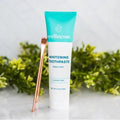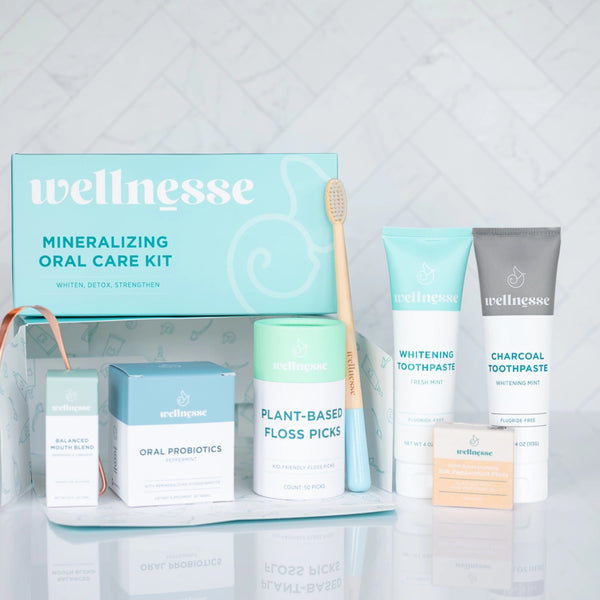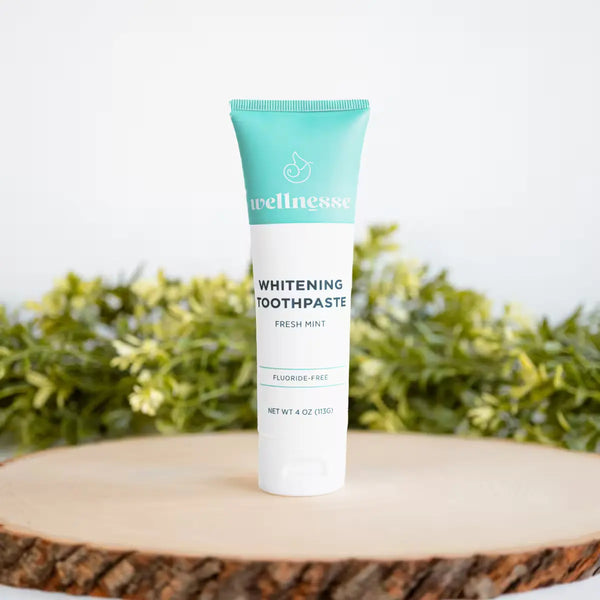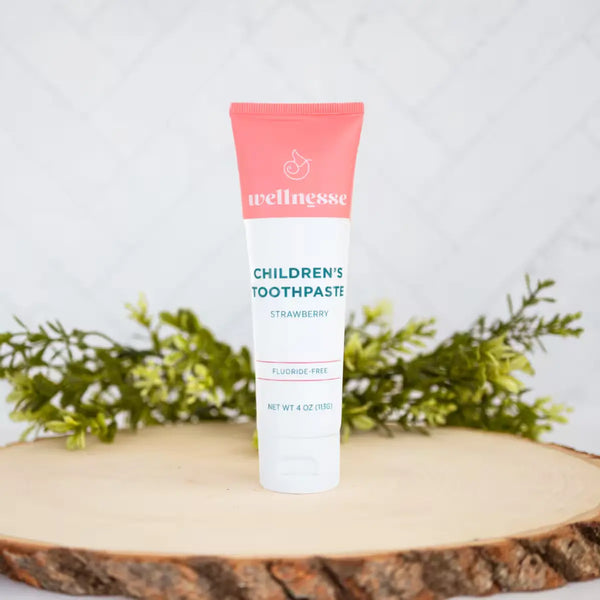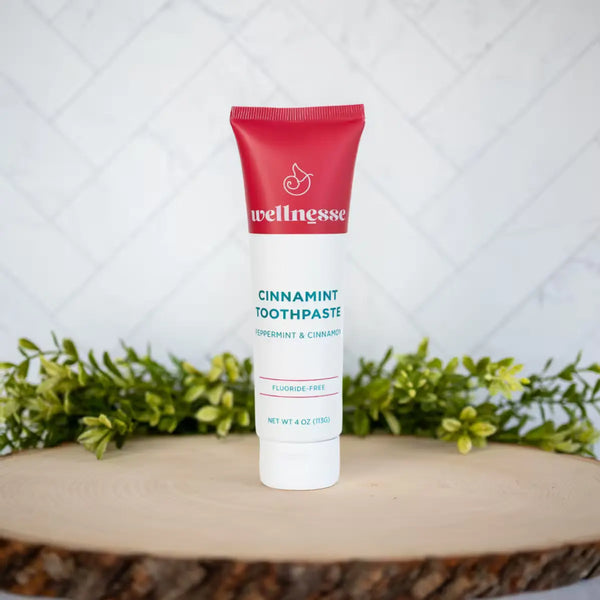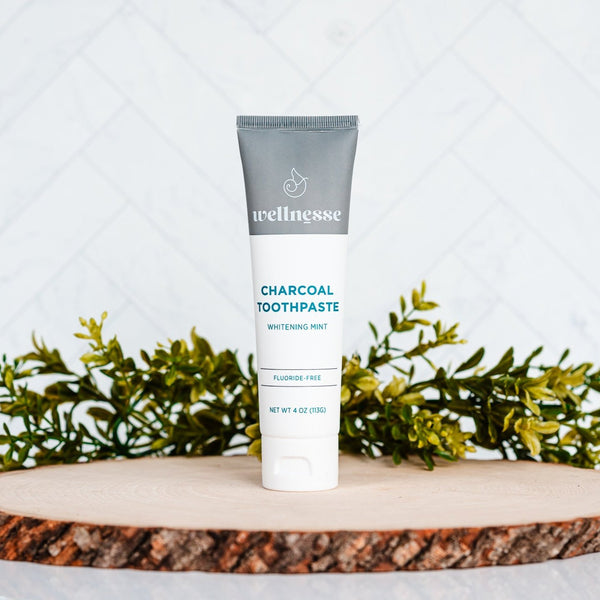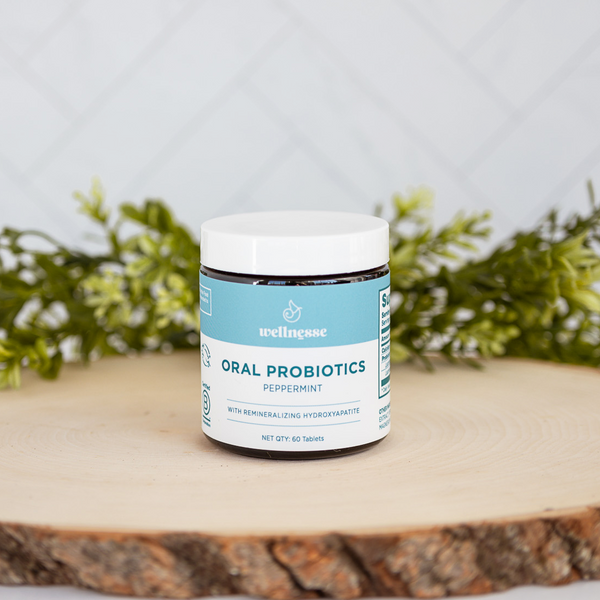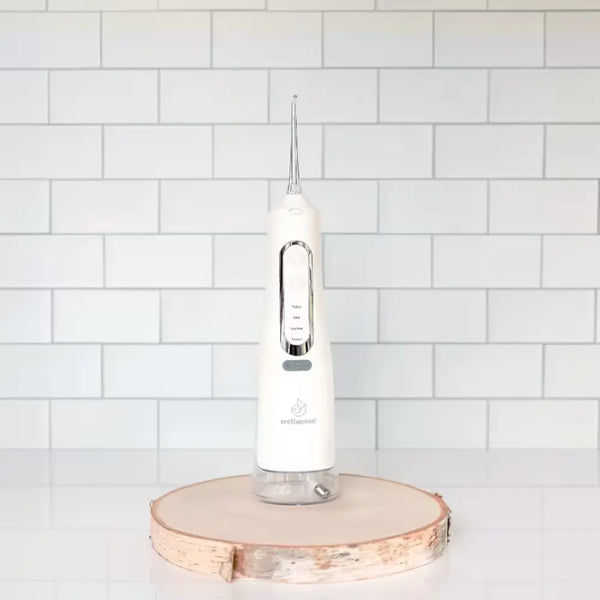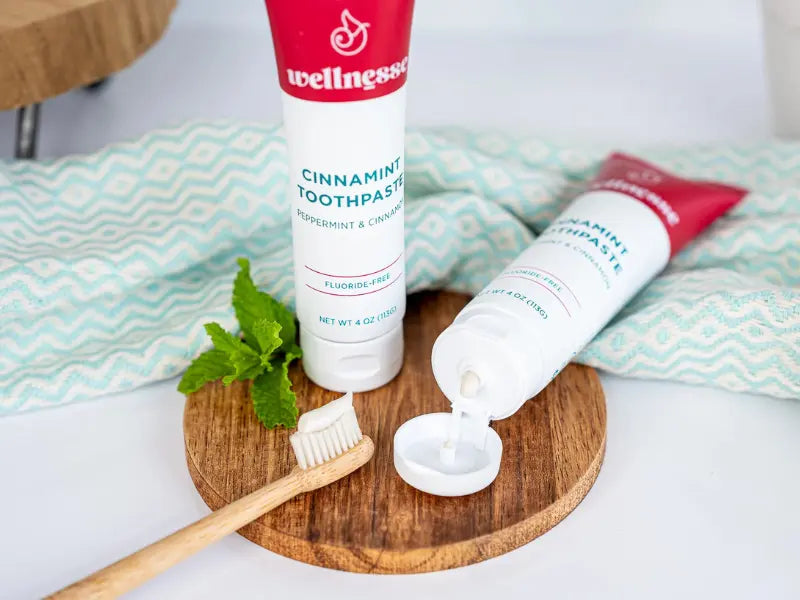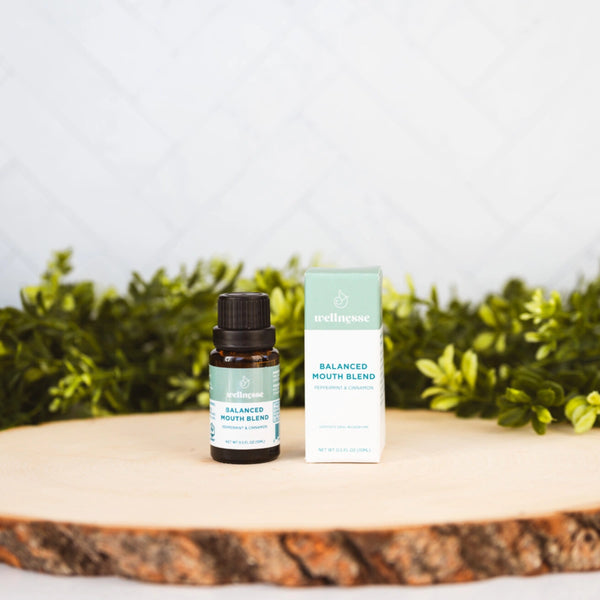
How Mineral-Based Toothpaste Provides Sensitivity Relief
Mineral-based toothpastes operate through a targeted and natural approach to maintaining and restoring dental health, primarily by supporting the body’s own mechanisms for enamel repair and cavity prevention. By creating a protective mineral layer over vulnerable spots, these toothpastes help reduce pain and prevent further enamel erosion triggered by daily wear, acidic foods, or aggressive brushing.
Sealing Tubules
When enamel thins or gums recede, tiny channels in the teeth become exposed. These tubules lead directly to the nerve endings, which explains the sharp pain triggered by temperature changes or the consumption of sweet foods. They work by filling and sealing these microscopic channels with natural minerals. This process helps reduce nerve stimulation, which is crucial for providing relief from sensitive teeth. Sealing the tubules also slows down further enamel erosion by protecting vulnerable areas from bacteria and acid exposure. This physical approach is both safe and sustainable for those with chronic sensitivity.
Rebuilding Enamel Structure
One of the standout benefits of mineral-based toothpaste is its ability to repair micro-damage by restoring the surface layer. These products often contain ingredients that resemble natural enamel, allowing them to integrate smoothly and reinforce weakened spots. This is especially helpful for individuals seeking the best toothpaste for enamel repair that avoids synthetic compounds. Over time, brushing with these formulas creates a smoother, more rigid surface. This not only reduces pain but also makes teeth more resistant to future harm.
Delivering Enamel Repair Without Fluoride
Mineral-based toothpastes provide powerful enamel support without relying on fluoride. For those with sensitivities or health concerns related to fluoride, this is a welcome alternative. Minerals like hydroxyapatite are naturally found in human enamel, so they work in harmony with your teeth. A well-formulated remineralizing fluoride-free toothpaste can restore lost minerals, smooth out rough spots, and reduce the chances of future decay. This natural compatibility means better long-term tolerance. These ingredients help reverse early enamel erosion before it leads to cavities or chronic discomfort.
Clinical Evidence and Studies
The efficacy and safety of mineral-based toothpastes have been the subject of increasing scientific interest, with numerous studies and clinical trials evaluating their benefits for dental health. Researchers have focused on the ability of these toothpastes to remineralize enamel, reduce sensitivity, and support overall oral wellness. Several randomized controlled trials have demonstrated that hydroxyapatite-based formulations can effectively repair early enamel lesions and reduce hypersensitivity.
Comparative Effectiveness
When choosing a toothpaste for sensitivity relief and enamel care, many people find themselves weighing mineral-based formulas against conventional fluoride toothpastes. Both types aim to strengthen teeth and prevent decay, but their approaches, efficacy, and safety profiles differ significantly. The choice depends on individual needs, preferences, and guidance from dental professionals.
Key Ingredients for Sensitive Teeth Relief
Micro-Hydroxyapatite and Bioactive Calcium Phosphates
These minerals mimic the crystalline structure of enamel, making them ideal for strengthening and repairing teeth. When applied regularly, they bind to the surface and fill in microscopic defects. This action helps rebuild a healthy enamel layer without relying on synthetic agents. People searching for hydroxyapatite for teeth solutions appreciate how well this ingredient supports structural recovery. Bioactive calcium phosphates further assist by releasing vital ions that improve mineral density. Together, they form a powerful foundation for reducing sensitivity and enhancing resilience in vulnerable areas.
Xylitol, Zinc, and Green Tea
Xylitol, a plant-based sweetener, helps neutralize oral acids and reduce cavity-causing bacteria. Zinc, known for its antimicrobial properties, helps target plaque formation and supports the maintenance of a balanced oral microbiome. Green tea extract further supports tissue health and helps calm inflammation along the gum line. These components are frequently found in toothpaste for sensitivity, where they offer a complete care experience. They work together to reduce bad breath, control bacterial growth, and protect soft tissue from irritation. For individuals experiencing sensitivity due to gum recession or early gum disease, this trio offers essential support.
Low-Abrasive Whitening Agents
These low-abrasion ingredients clean without stripping protective layers, making them ideal for delicate teeth. If you're looking for a teeth whitening formula for sensitive teeth, it's essential to choose one that has been carefully designed. Such toothpastes brighten the smile gradually while preserving the natural barrier that shields nerves. Ingredients such as coconut oil and baking soda may also be included in gentle formulations, providing mild stain-lifting properties.
Safety and Side Effects
Mineral-based toothpastes are widely regarded as safe for most users, offering a gentle alternative to conventional formulas that rely on synthetic chemicals or fluoride. Their primary active ingredients are biocompatible minerals naturally found in teeth and bones. This close resemblance to the body’s tissues means that adverse reactions are rare, and these toothpastes are generally well-tolerated, even by individuals with sensitive mouths or allergies to common additives. For those seeking a fluoride-free option due to health concerns, allergies, or personal preference, mineral-based formulas provide adequate enamel support without the potential risks associated with fluoride ingestion, particularly in children or people with certain medical conditions.
Choosing the Best Mineral Toothpaste for Daily Use
Reading Labels
Start by identifying active ingredients such as hydroxyapatite, calcium phosphates, or magnesium-based compounds. These minerals should be clearly listed in the ingredient list. A slightly alkaline pH helps counteract mouth acidity, which contributes to enamel erosion. For those needing the best toothpaste for enamel care, pH matters more than most realize. Abrasiveness should also be considered.
Paired With Other Oral Care Needs
Toothpaste isn’t one-size-fits-all, and your choice should reflect more than just sensitivity. If you struggle with bleeding gums, look for formulations that contain soothing botanicals or antibacterial agents. Those interested in whitening should seek gentle brighteners that won’t worsen pain. A sensitivity relief toothpaste can include additional features, such as anti-plaque support or natural breath fresheners. If you want to address mild staining, gum tenderness, and sensitivity, look for a multi-functional formula. A toothpaste that meets several criteria will save time and provide a consistent experience, which is crucial for long-term success.
Fluoride-Free vs. Fluoride-Alternate Strategies
Not everyone wants it in their routine. Some people prefer fluoride-free formulas due to allergies, health preferences, or sensitivity to the compound. Thankfully, modern alternatives exist. Suppose you’re aiming to strengthen teeth without fluoride; ingredients like nano-hydroxyapatite, calcium phosphate, and magnesium carbonate offer powerful remineralizing benefits. These ingredients mimic the natural rebuilding process and can help prevent decay without the side effects associated with fluoride.

Usage Recommendations
Brushing Tips
Brushing your teeth plays a pivotal role in oral health, especially when using mineral toothpaste designed to remineralize and strengthen enamel. Incorporating the right technique, timing, and habits enhances the performance of remineralizing products. Below are key brushing tips to ensure you’re getting the most out of your mineral toothpaste routine:
-
Choose A Soft-Bristled Toothbrush: A soft-bristled toothbrush plays a critical role in preserving enamel and promoting optimal mineral uptake. Hard bristles, though seemingly more efficient, can wear down enamel and irritate gum tissue over time. Soft bristles, on the other hand, flex more easily and allow you to clean the surface of your teeth thoroughly without causing micro-damage. This becomes even more important when using a mineral toothpaste, which depends on having a healthy, intact enamel surface to adhere to and reinforce. Additionally, soft bristles are better at reaching along the gumline without risking recession, thus maintaining a protective barrier. They also make it easier to maintain consistency in your brushing routine since they tend to be more comfortable, encouraging longer brushing times. Look for toothbrushes labeled “soft” or “extra-soft,” and consider replacing them every 3–4 months or sooner if the bristles become frayed.
-
Brush With Small Circular Motions: Small, circular motions ensure that the bristles glide gently over the teeth and gums, maximizing surface contact while minimizing damage. Unlike horizontal or vertical scrubbing, which can erode enamel and inflame gums, the circular method is designed to mirror the natural curves of your teeth and gumline. This technique enhances the distribution of toothpaste minerals, allowing for more consistent exposure across the entire enamel surface. Additionally, it reduces the likelihood of missing hidden plaque deposits in between teeth or along the gum margins.
-
Let the Toothpaste Sit Before Spitting: This brief moment can significantly increase the amount of calcium, phosphate, or hydroxyapatite absorbed into the enamel. Mineral toothpastes often contain specialized active ingredients that need time to interact with tooth surfaces and penetrate micro-lesions in the enamel. Spitting immediately after brushing cuts this interaction short, potentially wasting the benefits of the product. During the post-brush pause, the ingredients begin to bind with the tooth surface, promoting the remineralization process and reinforcing the natural structure of the enamel. Adding this short pause to your brushing routine requires no additional tools or products, just a shift in behavior that offers long-term protective benefits.
-
Avoid Immediate Rinsing: Water rinsing dilutes and washes away the active ingredients in your toothpaste before they’ve had a chance to bond to your teeth. This is especially counterproductive when using mineral-rich toothpaste, as these formulas are designed to deliver therapeutic agents to the enamel surface over time. Avoiding rinsing preserves a thin layer of protective residue that continues to benefit the teeth after you finish brushing. This residual film acts as a slow-release mechanism, prolonging the exposure of enamel to beneficial minerals. Instead of rinsing, try spitting out the excess foam and letting the remaining paste linger naturally.
-
Brush Twice A Day: Consistency is the key to any effective dental routine, and brushing twice a day ensures that your teeth are regularly exposed to minerals that help repair and fortify enamel. Morning brushing clears away bacteria that accumulated overnight and primes your enamel for the challenges of the day, such as acidic foods, temperature changes, and more. Evening brushing is arguably even more important, as it clears the mouth of the day’s buildup and creates an ideal environment for overnight remineralization. Brushing in the morning and evening also trains your body and habits, reinforcing a stable oral care regimen. For those with early signs of enamel wear, sensitivity, or white spot lesions, twice-daily brushing can be the difference between deterioration and recovery. The habit also supports gum health and bacterial control, making it a holistic approach to oral well-being.
Optimizing your brushing routine is about consistency and timing. By committing to these practices, you support your teeth's natural defense system and lay the foundation for long-lasting oral health. Small changes in your daily routine can result in profound improvements in the strength, resilience, and vitality of your smile.
Complementary Habits
Complementing your brushing routine with supportive habits can lead to better long-term results. Drinking plenty of water helps flush away acids and food particles, while chewing sugar-free gum can boost saliva production, which aids natural remineralization. Using a straw when drinking acidic beverages limits their contact with enamel. If you're looking for gentle oral care, these simple changes can reduce the risk of erosion and sensitivity without requiring complex routines. Consider brushing after breakfast rather than before to prevent acid abrasion from morning meals. Also, be cautious with over-the-counter whitening kits, as they may increase sensitivity if used too often.
Mouthguards and Soft-Bristle Brushes
Mouthguards protect against nighttime grinding, a common cause of enamel wear and sensitivity. Alkaline mouth rinses can neutralize oral acids, offering an added layer of protection. Soft-bristle brushes are essential for avoiding damage to already vulnerable enamel and gums. People using toothpaste for a toothache may benefit from these additional products, especially during flare-ups or dental treatment recovery.
Diet and Supplement Support
What you eat plays a critical role in maintaining strong teeth and healthy enamel. Nutrients like vitamin D, K2, and magnesium contribute to calcium regulation and bone strength. These vitamins help guide minerals into teeth and bones, making them more durable. For anyone using the best toothpaste to strengthen teeth, adding supportive nutrition completes the picture. Foods like leafy greens, eggs, dairy, and fatty fish offer essential nutrients that promote remineralization from within. In some cases, supplements may help fill dietary gaps, especially for people with restricted eating patterns. Including these nutrients in your daily plan reinforces the work your toothpaste does and provides a solid foundation for lifelong oral wellness.
Shopping and Storage Considerations
How to Buy Toothpaste Online With Confidence
Buying enamel-safe toothpaste online may seem like a minor task, but it has implications for your oral health, budget, and environmental footprint. With countless products on the market, it’s easy to fall into the trap of choosing the wrong item based solely on flashy branding or influencer hype. Since you can’t physically inspect the product when shopping online, making informed decisions becomes even more essential. Below is a comprehensive checklist that dives into the key points you should consider:
-
Check for transparent ingredient lists and look for specific minerals like hydroxyapatite or calcium phosphate.
-
Verify the seller’s reputation by reading store ratings and ensuring you're not buying from a third-party of unknown origin.
-
Look for clinical claims and certifications, such as non-toxic labels or dental association endorsements.
-
Examine return policies in case the product causes a reaction or doesn't suit your needs.
-
Review packaging details for eco-friendliness and proper storage instructions to maintain product quality.
A few extra minutes of research can make the difference between a regrettable impulse buy and a smart, health-forward choice that supports your smile long-term.
Checking Expiration Dates
Toothpaste comes with an expiration date. The effectiveness of active ingredients can weaken over time. When purchasing, especially in bulk or during sales, check for clear expiration information. For a toothpaste for dental pain, diminished mineral potency means less enamel support and reduced effectiveness in blocking pain triggers. Once opened, store the tube in a cool, dry place and avoid letting it sit uncapped, as this may introduce moisture or bacteria. If the texture, smell, or color changes, it’s best to discard the product. Proper storage and timely usage ensure you get the full benefit from each application.
A thoughtful approach centered on gentle oral care can offer lasting comfort and support. These products work with the natural biology of your teeth rather than masking pain temporarily. This gentle path respects the balance of your mouth and supports oral wellness without compromising on effectiveness. For individuals who prefer straightforward routines with tangible benefits, mineral-based products provide a reassuring option. They provide the foundation for a healthier, less reactive smile that stands up to everyday challenges without requiring drastic changes.
